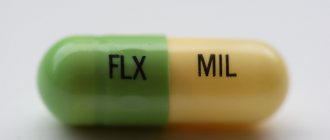The temperature at which salmonella dies in eggs depends on the level of heating. When boiling - instantly. You have visited the site correctly: depending on the source, they write that salmonella dies at temperature... but the number is changed. It is impossible to understand how to cook as the values change.
salmonella bacterium
To find out how salmonella dies, it was decided to look through reference books and textbooks. Wikipedia was not ignored. The correct temperature for the death of the parasite is given there. The parasite is small, with a cell length of several microns.
The causative agent of salmonellosis
What is salmonella? This is a special type of bacteria that, when entering the human body, leads to inflammation of certain parts of the digestive system and severe intoxication.
They are motile gram-negative rods with flagella. The causative agent of salmonellosis (Salmonella) belongs to the family of intestinal enterobacteria, which is associated with the ability of this type of microorganisms to infect the intestines, although there are other forms of the disease.
Salmonella has certain characteristics.
- They are resistant to many environmental factors: they can survive at a temperature of -82 ºC and remain on the surface for a long time in a dried form.
- On surrounding objects at normal room temperature, bacteria can be viable for up to three months.
- The causative agent of salmonellosis lives in animal feces for up to four years.
- They are resistant to salting, smoking and freezing.
- Salmonella lives in the meat of domestic and wild animals, poultry, milk, and bird eggs. The peculiarity of these bacteria is the ability to multiply in milk and ready-made meat dishes for a long time, while they do not change their appearance, that is, it is not visually possible to distinguish contaminated products from clean ones.
- Where else does salmonella live? - in water, if it gets there with feces or through contaminated objects, they can remain for up to two months.
- Salmonella can produce or produce exotoxins: enterotoxin and cytotoxin.
- When the bacterium is destroyed, endotoxin is released into the body of an infected person, which leads to the development of severe intoxication.
- To destroy bacteria in products, they have to be subjected to long-term heat treatment. At what temperature does salmonella die? - at least 50 ºC. For example, to kill salmonella in a small piece of meat weighing about 500 mg, you will have to cook or stew it for 2.5 hours.
Salmonella detection history
Throughout the history of medicine, bacteriologists have repeatedly described diseases that resemble salmonellosis in their course. Pathogens have been periodically discovered in the meat of dead animals. At the end of the 19th century, American scientists D.E. Salmon and J. Smith isolated and described the causative agents of salmonellosis in animals, but called the disease swine fever. A few years later, the same bacteria were isolated from the intestines of deceased people.
Over the next 40 years, data on similar infections and the bacteria that caused them regularly surfaced in medicine. All this led to the identification of a separate type of intestinal infections, and their causative agents were named after the scientist who first described the Salmonella bacteria.
Causes of salmonellosis
Salmonellosis is an acute infectious disease caused by salmonella. What animals can be a source of infection?
Almost any animal can get sick and infect others:
- horses, pigs, sheep,
- cattle,
- Even pets cats and dogs suffer from salmonellosis,
- wild animals are often a source of infection: foxes, wolves, arctic foxes, beavers, bears,
- but the main place in the transmission of infection is occupied by poultry, especially waterfowl, salmonellosis can be in chicken eggs, in the meat of chicken, ducks and geese, even dry egg powder prepared from contaminated eggs may contain the pathogen,
- wild birds carry the infection - pigeons, gulls and sparrows,
- cases of salmonellosis have been recorded among lizards, turtles, crabs and frogs,
- The source of infection for salmonellosis can be a person (bacterium carrier) during the development of the disease.
That is, salmonellosis occurs everywhere, everywhere, but more often in the household.
The methods of infection with salmonellosis are also varied. Sick animals may appear healthy and shed bacteria into the environment through feces, saliva and urine, mucus from sneezing, milk and eggs. After the death of an infected animal, the causative agent of salmonellosis remains in the meat.
Infection with salmonellosis is most often possible through the fecal-oral mechanism. The routes of transmission of infection are as follows.
- One of the main routes of infection is nutritional through products, which include animal and poultry meat, as well as eggs and milk.
- There are cases when food becomes infected during processing or preparation through contact with contaminated surfaces.
- How else is salmonellosis transmitted? — through contact and household contact through unwashed hands, after communicating with infected people and pets in case of non-compliance with sanitary and hygienic standards.
- One of the possible ways of spreading the infection is through water when swallowing water with bacteria.
- How else can you get salmonellosis? — through dust, when its particles are inhaled, a pathogen can also enter the human body.
A person can get salmonellosis throughout the year, but from an epidemiological point of view, the most dangerous period is the summer. In hot weather, food storage conditions are more often violated. In summer, both outbreaks of the disease and isolated or sporadic cases are recorded.
Pathogenesis of salmonellosis
Salmonellosis is an anthropozoonotic infection caused by Salmonella, the leading place in the development of which is given to animals. When bacteria enter the human body, they pass through the defense system of the upper digestive organs. Most often, the causative agent of salmonellosis invades and begins to multiply in the initial part of the small intestine. Here they are partially captured by blood cells called macrophages. This is the first active human defense system, but it is after its operation and the destruction of bacteria that more serious changes begin to occur - the release of endotoxin, which affects the nerves and vessels of the intestine, which is the cause of the development of severe intoxication of the body with salmonellosis.
Then the bacteria penetrate the lymphatic vessels and rush through them to the intestinal lymph nodes, which are a powerful immune defense of our body. Reducing protection, the causative agent of salmonellosis rushes into the circulatory system and spreads to all organs and systems, forming secondary foci of infection.
What is the danger of salmonellosis? — it consists in the release of toxins, which additionally affect all organ systems. If you're lucky, the infection will go away quickly, and only the intestines will be involved in the inflammatory process. But if there are too many bacteria or a person’s immunity is sharply reduced, then salmonellosis ends with the development of complications.
How can you become infected with salmonellosis?
The causes of salmonellosis are quite clear: you definitely need to come into contact with the stick somewhere: communicate with patients or eat low-quality products. Salmonella can enter our body in the following way:
- Through food. The disease is transmitted through products: occurs when consuming contaminated eggs (with the exception of quail eggs), dairy products, and insufficiently cooked meat.
- Through contact with pets. Transmitted through normal contact. Unfortunately, animals also get sick with salmonellosis, and asymptomatically.
- Through the water. When swimming in bodies of water where birds actively swim, or drinking contaminated water, salmonellosis is transmitted to humans along with the water.
- It is transmitted through household contact with a carrier or patient.
Symptoms
How long is the incubation period for salmonellosis? - its average duration is from 12 to 24 hours. In rare cases, it is short and lasts about 6 hours, and sometimes the first signs of infection appear only after 2 days.
There are 3 main forms of salmonellosis.
- Gastrointestinal with primary damage to the stomach or intestines.
- A generalized variant of the development of the disease with the involvement of other organs and systems in the inflammatory process.
- Bacterial excretion.
The manifestation of the disease depends on the form of infection. How does salmonellosis manifest in most cases? — the classic variant of the development of infection is the gastrointestinal form.
The symptoms of salmonellosis are as follows.
- Gastritis due to the development of the disease is rare. Its manifestations include nausea, stomach pain and vomiting.
- The first signs of salmonellosis with intestinal damage are an acute onset and early development of symptoms of intoxication.
- Nausea and vomiting, both single and repeated.
- Copious frequent loose stools. It looks foamy, brown, yellow or dark green in color.
- Abdominal pain and bloating, constant rumbling.
- How long does it take for salmonellosis to appear when all parts of the intestine are affected? - the incubation period is short, and the disease itself is severe and begins with a rise in temperature, frequent and liquid stools with small streaks of blood.
- Often, manifestations of inflammation of the pancreas are added to the general classical symptoms, and liver damage is involved in the inflammatory process.
- With salmonellosis, the functioning of the cardiovascular system is disrupted - the pulse rate changes, blood pressure decreases, and the heart rhythm becomes abnormal.
- In the absence of timely treatment or in particularly severe cases, collapse develops when blood pressure drops sharply and blood circulation in vital organs decreases.
- Salmonellosis during pregnancy is severe, with all the symptoms and in severe cases can result in miscarriage.
Mild, moderate and severe course is characteristic of any form of salmonellosis, while the symptoms of infection occur with varying frequency.
Bacterial excretion during the development of salmonellosis can be acute or chronic. In the first case, salmonella can be released into the environment within three months after the first manifestations of the disease, in the second - a longer period.
The first signs of salmonellosis
The period when people notice the first symptoms of salmonellosis after infection varies from 8 hours to 3 days. Headache, fever, chills, fatigue, indigestion - these are common signs of intoxication that are inherent in all intestinal infections. Salmonellosis should be suspected if:
- repeated vomiting;
- watery, swamp-colored diarrhea;
- pain in the upper abdomen;
- increasing weakness;
- lack of significant effect of antidiarrheals from your medicine cabinet.
Other possible signs include blood, mucus, and spasms during bowel movements. If you notice the first symptoms of infection, rush to see an infectious disease specialist or therapist. Even if it is not salmonellosis, such manifestations clearly signal that there is an infection in the body!
Diagnosis of infection
It is easy to make a diagnosis during an outbreak, but isolated cases require special examinations.
- How to get tested for salmonellosis? The basis of diagnosis is bacterial research methods, the material for which is blood, urine, stomach contents, vomit, and pus. Analysis is most effective in the early stages of disease development.
- Serological methods of diagnosis include RA and RNGA, they can be performed a little later on the 7th or 8th day of the disease. RA is positive at a serum dilution of 1:200.
Phytotherapy
Before starting treatment, you should ask the doctor's opinion. He will recommend the most effective natural ingredients, including chamomile, St. John's wort, sage and mint. Based on them, decoctions and infusions are made that relieve the symptoms of salmonellosis.
The course consists of 30 days, every decade you need to change the main components. Through herbal medicine, a mild form of this disease can be cured without the risk of suffering from the side effects of medications.
Complications of salmonellosis
How dangerous is salmonellosis? Not only by its course and damage to all organs and systems. In case of unsuccessful or untimely treatment, the infection is accompanied by serious complications.
- The gastrointestinal or gastrointestinal form of salmonellosis sometimes ends in the development of collapse or hypovolemic shock (low blood pressure, pale skin, nausea, dizziness and loss of consciousness).
- Complications of salmonellosis include acute heart failure.
- During the development of the disease, numerous septic complications often develop - purulent inflammation of the joints, abscesses of the liver, spleen and kidneys.
- Sometimes the heart is affected - endocarditis.
- Inflammatory processes occur in the urinary system - cystitis, pyelonephritis.
- The consequence of salmonellosis can be a brain abscess and inflammation of its membranes or meningitis.
- Sometimes salmonellosis ends in the development of peritonitis, pneumonia or appendicitis.
More often, salmonellosis ends in complete recovery. Only in no more than 0.2–0.3% of cases is death possible.
Is it possible to get salmonellosis again? - yes, with any form of infection, relapses of the disease occur. The body does not permanently produce specific immune cells that protect a person from developing the disease in the future.
Treatment
How to treat salmonellosis? Considering the variety of clinical manifestations and the various options for the course of the disease itself, treatment should be carried out only under the supervision of specialists in a hospital. Although for mild forms of salmonellosis, home treatment is allowed.
Treatment is always selected individually.
- In the first hours of the development of salmonellosis, all patients with damage to the abdomen and intestines are prescribed gastric lavage.
- To stop diarrhea, calcium supplements are prescribed in therapeutic doses.
- A proper diet plays an important role in the treatment of salmonellosis. For mild cases of the disease, this is the main method of helping patients. During the treatment of a severe infection, temporary dietary restrictions are indicated for many foods. High-calorie foods, milk, eggs, fresh vegetables, smoked foods, pickles, marinades, and sweets are excluded. Nutrition for salmonellosis in adults during treatment includes gentle processing of foods - only boiled, steamed and stewed dishes. The total calorie content of foods during the day should not exceed 2 thousand kcal. Food should be at room temperature, hot dishes are temporarily excluded.
- If repeated vomiting and loose stools develop, dehydration therapy is prescribed - intravenous plasma-substituting solutions are used.
- As for the prescription of antibiotics for salmonellosis, they are not effective for all forms of the disease. When bacteria are located intracellularly, antibacterial drugs have virtually no effect on the pathogen. Generalized variants of the disease require the prescription of antimicrobial agents. They are selected individually, taking into account the sensitivity of bacteria, which is determined during testing.
- A significant role in treatment is played by the Salmonella bacteriophage, which acts directly on bacteria, destroying them.
- Anti-inflammatory drugs are prescribed as additional therapy. For symptomatic relief, multivitamins, Methyluracil, and potassium preparations are used to quickly restore the body after an infection.
In the case of bacterial excretion, salmonella in the human body are insensitive to many antibiotics. Then medications are selected individually with a long course of treatment.
Prevention
Prevention of salmonellosis includes a number of anti-epidemic measures and individual measures to protect against infection.
Measures to prevent salmonellosis include the following preventive measures.
- Active work of veterinary and sanitary-hygienic services to identify the disease and carriage among domestic animals and people.
- Food industry workers play a large role in the spread of infection, so they are examined annually for carrier status.
- If a source of infection is identified, active work is carried out with contact persons, followed by their examination for carriage or mild asymptomatic course of the disease.
- Prevention of salmonellosis consists of carrying out sanitary education among the population with an explanation of the rules for heat treatment of products.
- Personal hygiene plays an important role in reducing infection transmission factors among people.
- Preventive measures include active annual monitoring of bacterial excretors and timely treatment.
- How to prevent salmonellosis at home? is a long-term heat treatment of meat products, eggs and dairy products.
Once again about the treatment of eggs from salmonella
I read this post https://pikabu.ru/story/o_yaytsakh_vsmyatku_yaichnitse_glazu….
In terms of its message, it is undoubtedly correct, but in terms of content it raised several questions, since it evenly mixed generally reliable facts and statements, arrogant taste (like “ the most delicious eggs are those with a runny yolk.”
Hard-boiled eggs are only suitable for salad or stuffing, and scrambled eggs with a fried yolk are a mockery of the dish. Liquid egg yolk is incredibly tasty” - damn, man, well, it depends on anyone) and outright illiteracy.
There is no doubt that eggs need to be processed. BUT, washing eggs is a catastrophic stupidity or a myth that, unfortunately, has become widespread among chefs. And when you search on Google for “treating eggs for salmonella,” the vast majority of links come up with crap like “wash your eggs with (soapy) water.”
Salmonella cannot be killed and cannot be washed off with water or soapy water if you will. And the fact that you did not become infected with salmonellosis by washing your eggs is not because you are doing well, but because you were just lucky. In production today, eggs are processed properly and therefore the risk of infection is minimal, but it does exist.
There is a greater risk when consuming homemade eggs or eggs purchased at markets. To disinfect eggs at home, if you don’t have an ultraviolet lamp lying around at home, you need to place them in a slightly acidic solution (add vinegar to water) for 5-10 minutes before use. Or in an alkaline solution (soda dissolved in water) for at least 30 minutes.
They may object to me that soap is alkali, and they will be absolutely right, but you won’t wash each egg for 30 minutes, and soaking eggs in soapy water is a dubious task. However, it must be remembered that although such eggs have become safe, they are not stored for a long time, so it will not be possible to process them in advance for future use.
As proof of my words, people here are very fond of it, I recommend searching in Google for “egg processing according to SANPIN”, also reading about salmonella, who it is and why it dies, and for the most corrosive ones, take it from the library or download a textbook for vocational schools on storing and processing food . PS
And I didn’t learn about salmonella from the Internet, I saw it in the microscope in “microbiology” at the medical academy, and then I supervised patients with salmonellosis in “infectious diseases”.
[my] Eggs Salmonellosis Health Outlook Text
In this post Omelet “Tornado”, many people, once again, argued that if eggs are washed properly (it was even suggested with soap), any pathogens will be destroyed. This belief is incredibly common and fatally flawed.
It's all about the structure of the egg shell, actually here it is:
As can be seen under a microscope (Internet), the entire shell is dotted with small holes - “powders”. I didn’t count it myself, but in Soviet textbooks there was a figure of 15 thousand such holes. Well, what did you want? An egg, roughly speaking, is an analogue of a woman’s uterus, but outside the female body, and the fetus needs to “breathe,” like all living things in this world.
This same “inhaled” oxygen is used for various chemical processes in the egg, I won’t bother you with a description of the processes, just believe me, there are a lot of them and without them the egg is kirdyk. Actually, the size of this pore is incredibly large compared to the “microbe”. It's like driving a car into a Boeing hangar.
Therefore, the white of an egg can contain anything.
You logically ask - what about the yolk? Well, with it everything is somewhat more complicated, the yolk is protected from bacteria by a powerful immune system and it is not so easy for bacteria to get inside, but I would not give a 100% guarantee of safety, and therefore, according to the chance of infection, the white = yolk.
The egg itself may contain pathogens of Salmonellosis, Tuberculosis (any form) and Cholera. Don’t think that these diseases are far from you and your region, believe me, EVERYWHERE there is a chance to end up in a hospital bed, because transport companies, resellers, etc. are able to deliver this egg to you even from Africa, as long as it brings them profit.
I also often heard the phrase “Yes, I’ve been drinking raw eggs for years, my father drank it, my grandfather drank it, and I’m starting to give it to my son, no one has ever gotten sick with your salmonellosis” - survivor syndrome. If I'm lucky, I'll always be lucky and never get infected. I don’t argue that the chance of getting infected from an egg is quite low, but ask anyone if you have an infectious disease, everyone who has salmonellosis has eaten raw eggs.
Finally, I’ll probably say a couple of methods, I haven’t tried them myself, I’ll be honest, I don’t know their effectiveness. This was taught to us about 20 years ago by Irina Stepanovna, who has already left this world (on the contrary, your exams).
To disinfect eggs, before use, place them in vinegar and water (1 to 10 vinegar essence) for 5-10 minutes. Or in regular homemade soda (for a glass of water, a spoonful of soda and a couple of citric acid granules) for at least 30 minutes.
And after that you can drink these eggs of yours (although even after this method I would fry or boil them)
Be healthy, we don’t need work on New Year’s, have pity on us)
Show in full Health Eggs Medicine Misconception Error Salmonellosis
An egg is an animal product that has the highest biological value (BC) of 1. On average, an egg contains 6 grams of high-quality protein, which contains a full range of essential amino acids. Nowadays, eggs are very accessible, and we all know the importance of protein in the process of building muscles, which, in fact, are made of protein.
Eggs are a rich source of vitamins (A, E, K, D, B12), valuable minerals (calcium, zinc, iron), riboflavin, folic acid, and many other buzzwords)).
In addition, they have relatively high levels of monosaturated and polyunsaturated (Omega-3) fatty acids, which are involved in regulating hormones. Eggs are easy to digest and absorb.
In addition, they contain cholesterol, which is the main component in the synthesis of testosterone. It’s probably impossible to count everything.
For some people, it is customary to separate the whites from the yolks, so that the body receives only the necessary protein, and the fats remain in the yolk. This cannot be done (with some exceptions), it is the yolk that contains all the vitamins, minerals and essential amino acids.
Show in full 1
There are no more similar posts. You might be interested in other posts by tags:
Source: https://pikabu.ru/story/eshchyo_raz_ob_obrabotke_yaits_ot_salmonellyi_6157340
Features of the course of salmonellosis in children
A special group of the population are children. Before one year of age, their immunity has not yet been formed to fully respond to the presence of bacteria; after a year, it is still developing, so at preschool and school age, children have a hard time surviving the infection.
How dangerous is salmonellosis at this time and how does it occur in children? What are the features of the course of the disease in childhood?
- The cause of the development of salmonellosis in infants is often Salmonella typhimurium - a nosocomial infection that, under unfortunate circumstances, babies become infected with in the maternity hospital.
- Children under the age of one year are most susceptible to developing the infection.
- In children of high school age, as a rule, the disease progresses in the same way as in adults.
- Children communicate more often with animals and birds, so the contact route of infection is of great importance. In addition, the dust route of transmission of infection is not the least important.
- The incubation period of salmonellosis in children is in most cases shortened, no more than 12 hours.
- For children, the seasonality of the disease is more typical - the summer-autumn period of development of infections.
- Signs of salmonellosis in infants - general symptoms of intoxication predominate: weakness, lethargy, refusal to eat, the baby constantly spits up, he is sleepy, the child is more capricious, bowel movements are frequent up to 5-6 times a day, if no help is provided in the first days of the disease, the condition may get worse quickly.
- At this age, the gastroenterocolitic form of salmonellosis most often develops, that is, occurring with gastric and intestinal symptoms.
- Symptoms of salmonellosis in older children are severe weakness, adynamia, lack of appetite, constant nausea and repeated vomiting, green stools from 5 to 10 times a day, an increase in body temperature by at least 1.5 ºC, pain and rumbling in the abdomen.
- A sharp increase in body temperature to 40 ºC and above indicates a generalized infection, when purulent foci have formed in various organs.
- The consequences of salmonellosis in children, unlike adults, may be slightly different - in addition to all of the above, children often experience dysbacteriosis after an infection. Sometimes, after salmonellosis, chronic diseases of the digestive system develop, including those with limited production of enzymes for food processing - chronic pancreatitis. Allergenic children acquire another unpleasant factor - food allergies.
Treatment of salmonellosis in children
Therapy for this infectious disease in children begins in most cases with detoxification. This is one of the first stages of treatment for children. The fact is that with a fluid loss of up to 10%, the child may die. Therefore, the basis of treatment for salmonellosis in children is replacement of lost fluid. It is calculated by year and body weight.
Otherwise, the general principles of treatment are followed in the same way as in adults. Depending on the indications, antibacterial drugs are prescribed. Symptomatic therapy is carried out with antipyretic and restorative medications. In the treatment of salmonellosis in childhood, much attention is paid to the administration of drugs to restore intestinal microflora.
The diet for salmonellosis in children has its own characteristics:
- there is no need to force children to eat, especially in the first days of the development of the disease,
- Hardly digestible foods, including milk and eggs, are temporarily excluded from the diet,
- Due to a sudden loss of fluid, it is recommended that small children be given water, but it should be given in small portions, one spoon at a time is enough,
- otherwise, dietary recommendations correspond to those for adults,
- dietary restrictions are maintained for up to 5 days, then the diet is gradually expanded as needed.
What are the risk factors for salmonella food poisoning?
Salmonella food poisoning can occur at any age, but there are a number of factors that increase the risk of developing the disease. Not everyone with risk factors can get salmonella food poisoning.
Risk factors for salmonella food poisoning include:
- Eating raw or undercooked eggs or meat;
- Consumption of expired products;
- Eating leftover food that has been left over for more than two to three days;
- Immunodeficiency conditions, such as diabetes, cancer treatment and kidney disease;
- If you do not wash your hands after contact with a person suffering from salmonella food poisoning;
- Not washing your hands often enough, especially after using the toilet, touching animal feces, touching reptiles, or touching raw food contaminated with salmonella bacteria.
Intoxication due to salmonellosis
The intoxication syndrome for salmonellosis is important. The severity of the disease and the general condition of the patient depend on the degree of its development.
The period of intoxication begins at the moment of destruction of the causative agents of salmonellosis. Bacteria are captured by blood cells and the body destroys them in an attempt to cope with the microorganism. An exotoxin is released into the intestines, which determines the further condition of the person.
Signs of salmonella poisoning are as follows.
- With a mild degree of development of the disease, the symptoms of poisoning are moderate - general malaise, weakness and lack of appetite.
- The average severity of the infection is characterized by a high temperature of at least 39 ºC, headaches and dizziness, nausea and vomiting, cramps in the limbs, and aches throughout the body.
- Symptoms of poisoning with severe salmonellosis include chills and high body temperature over 40 ºC, severe weakness, and adynamia.
- At the time of the development of severe intoxication, the appearance of patients with salmonellosis is characteristic - they look exhausted, the skin is pale, dry, with a bluish tint, the voice is quiet, weak, numerous spasms appear in the limbs and throughout the body, the amount of urine excreted sharply decreases until it completely disappears.
- When intoxication develops during a person's examination, the doctor additionally notes an enlargement of the spleen and liver.
In case of salmonella poisoning or intoxication of the body due to an infectious disease, you should not try to help the person yourself. This condition is a direct indication for hospitalization.
General rules for the treatment of intoxication with salmonellosis
First aid for salmonellosis is gastric lavage and the introduction of a bacteriophage that destroys bacteria.
A person with severe symptoms is treated in an intensive care unit or intensive care unit. It is almost impossible to remove bacterial toxin from the human body.
To help the victim as much as possible, the following measures are taken:
- detoxification treatment of salmonellosis in adults and children consists of the administration of polyionic solutions - the volume of injected liquid in rare and severe cases reaches 8 liters per day (“Acesol”, “Trisol”),
- in the case when a person develops shock due to intoxication, additional colloidal solutions are prescribed, which include hemodez and reopolyglucin,
- Treatment of salmonellosis in severe forms of intoxication involves the administration of hormonal drugs and symptomatic medications.
Answers to frequently asked questions
- Does salmonellosis occur in quail eggs? The body temperature of quails is about 40 ºC - it is believed that it is detrimental to salmonella. And the pore diameter of a quail egg is much smaller, which traps common bacteria. But there are certain types of infectious agents that can survive at temperatures of 45 ºC, and their size is slightly smaller. Therefore, infection is quite possible. But as a rule, these birds are kept in better conditions, paying more attention to hygiene. In this regard, the incidence of salmonellosis infection after eating quail eggs is much lower.
- Is salmonellosis transmitted from person to person? - yes, this is possible. Firstly, in the case of bacterial carriage, a person poses a certain threat to others. It is a source of infection. If he works in the food industry and his profession is related to food preparation, he can infect the people around him. Secondly, if there is a sick person in the house with an acute form of salmonellosis, he poses a danger only when basic hygiene rules are not followed in the house and routine cleaning of the premises is not carried out.
- How to treat eggs against salmonellosis? To begin with, you can reduce the amount of salmonella on the egg shell - that is, wash it before eating. It does not matter whether the egg is cooked whole or whether it is included in the dish raw. In addition, all products potentially contaminated with salmonellosis need to be cooked for a long time. At a temperature of 100 ºC, salmonella die within three minutes. That is, it is advisable to boil the eggs all this time.
- Why is salmonellosis often transmitted through chicken eggs? Birds are often infected, but salmonella does not always harm them. Quite healthy bacterial carriage is observed. At the same time, in the intestines of birds there is a huge amount of bacteria, which are regularly released into the external environment through feces. Before being released, the egg becomes infected. In addition, inside the egg itself, the white may already be contaminated. Therefore, doctors recommend purchasing fresh eggs (they are less likely to be damaged by bacteria) and it is better to buy them in stores rather than at a spontaneous market.
Salmonellosis ranks first in the world among deaths from intestinal infectious diseases. And the number of new species of salmonella is increasing every year. It is impossible to eradicate the pathogen. What can you do to avoid getting sick? It is necessary to prepare food correctly, regularly observe basic hygiene rules, and teach children how to handle even exotic species of animals.
You can do it yourself
If you suspect sperm poisoning, you should immediately consult a doctor or the nearest hospital. As a self-help measure against often painful diarrhea, natural remedies have proven their ability to bind toxins in the intestines. Healing clay, which is dissolved in water, is especially effective. These drugs are available for free sale in pharmacies and pharmacies. A similar effect is associated with psyllium and psyllium husks, which are sold primarily in health food stores and organic supermarkets.
Severe diarrhea and vomiting greatly dehydrate the body. It is therefore important that those concerned pay attention to adequate fluids and minerals. Vegetable broth is especially suitable as the high salinity of the salt helps the body store water in the body. In severe cases or prolonged diarrhea and when taking dietary supplements, a multimineral preparation is especially useful. In addition, patients should be careful and, if possible, stay in bed so that the body can recover from the infection as quickly as possible.
Since salmonella is highly contagious, it is also important to pay attention to increased hygiene. An infected person should never prepare food for the family. Cups, plates and cutlery should not be shared with other people and should be washed with hot water of at least 60 degrees. There is also a risk of smear infection when sharing towels or other hygiene items.










